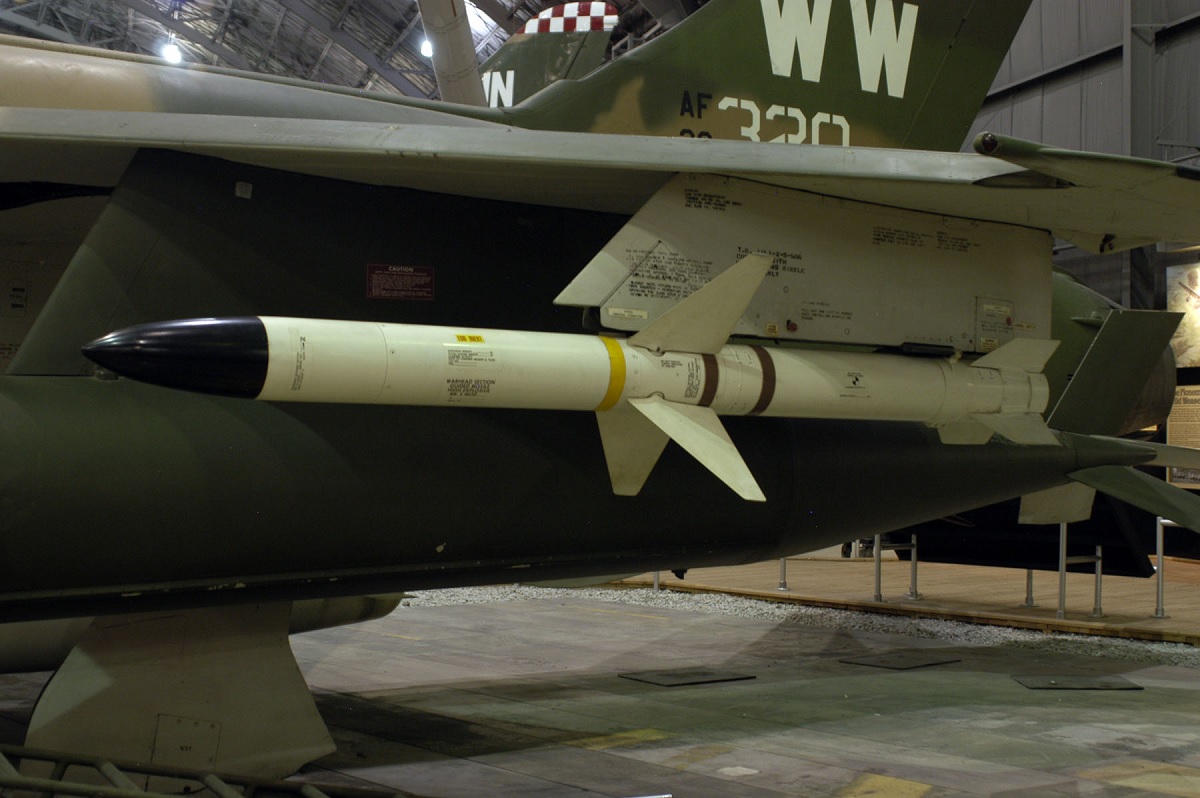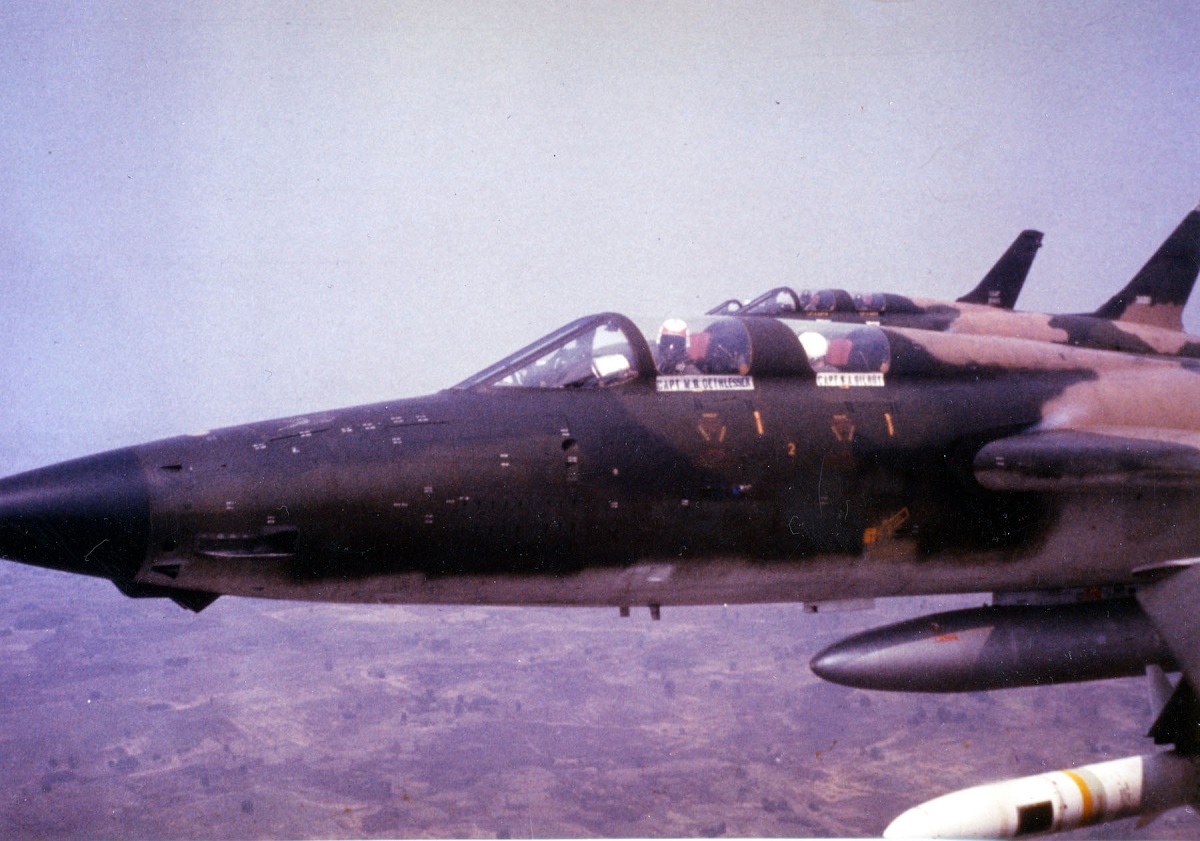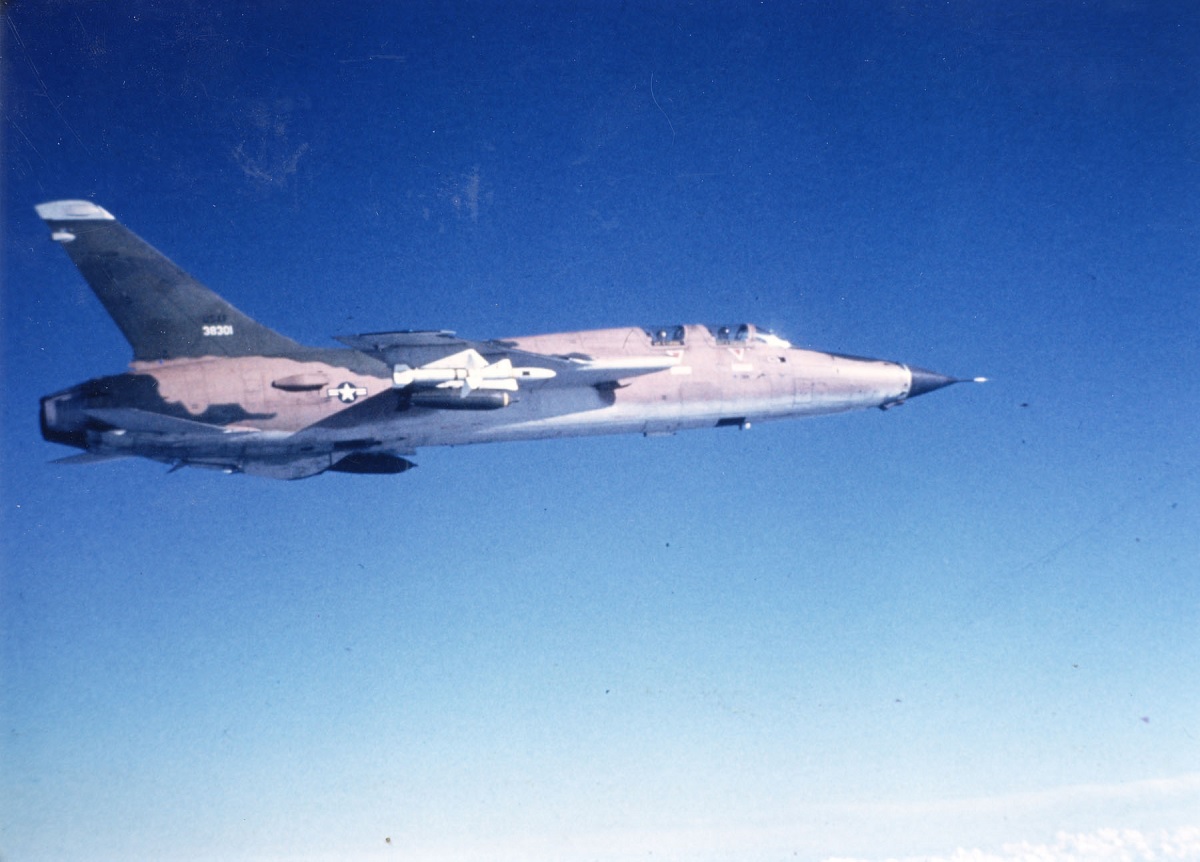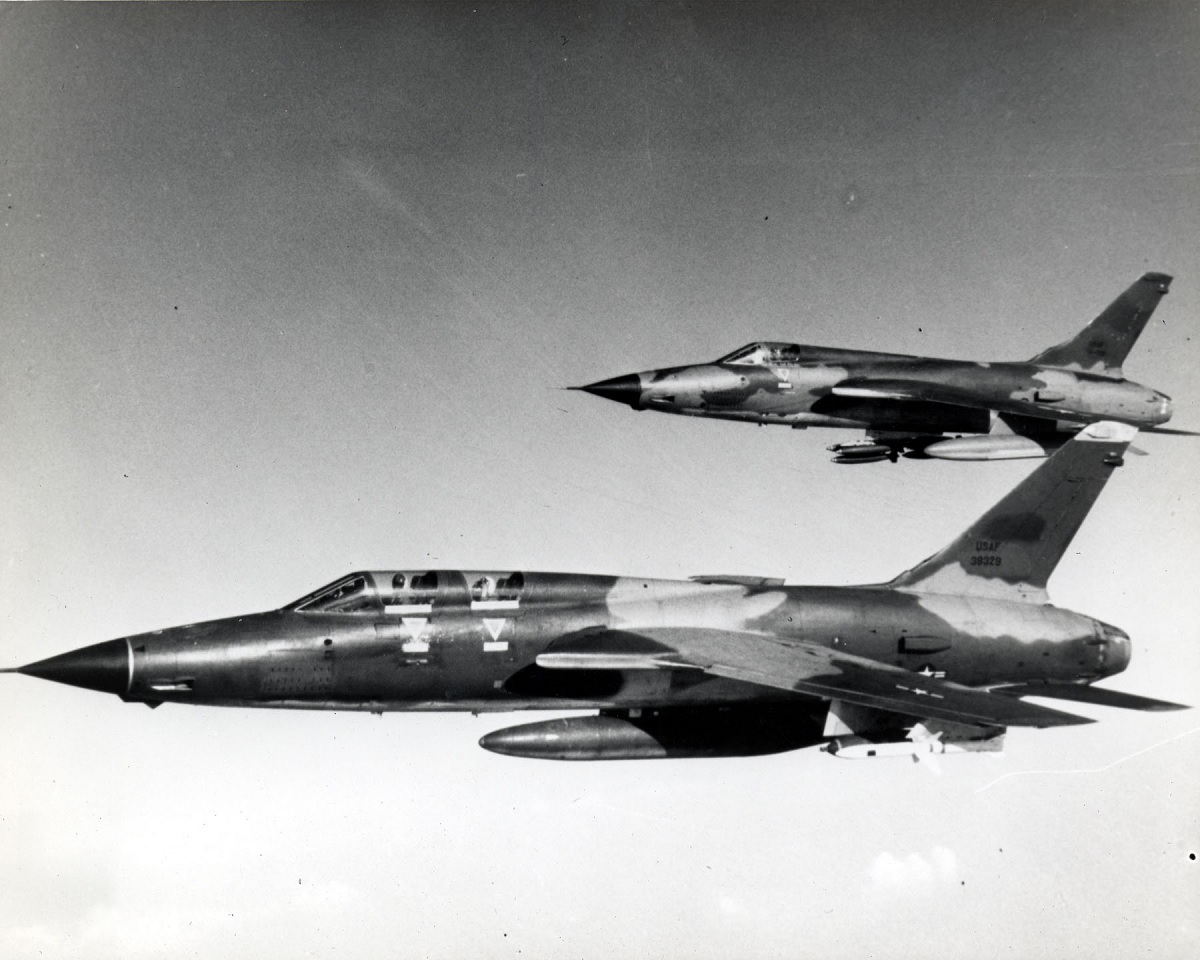The aircraft designated F-105F Wild Weasel III, took over as the USAF’s primary SAM suppressor during Operation Rolling Thunder in the summer of 1966, replacing the F-100F Wild Weasel I
The Republic F-105 Thunderchief, sometimes known as the “Thud,” was created as a replacement for the F-84F fighter bomber built by the company in 1951. In October 1955, the YF-105A prototype made its first flight, and Republic shipped the first production model to USAF) in 1958.
A total of 833 Thunderchiefs of all varieties, including 610 F-105Ds, were produced. A short time after the Tonkin Gulf incident in the summer of 1964, the service dispatched F-105s to Southeast Asia. During the Rolling Thunder airstrike against North Vietnam, the USAF used the F-105D heavily.
North Vietnam used the Soviet-made SA-2 Guideline surface-to-air missile (SAM) during this campaign, which destroyed American attack aircraft and put a stop to air operations over North Vietnam.
The combat-capable two-seat trainer variant of the Thud, the F-105F, was modified to carry out the “Wild Weasel” mission in order to neutralize and eliminate this danger.
The aircraft, designated F-105F Wild Weasel III (there was no production of Wild Weasel II), took over from the F-100F Wild Weasel I in the summer of 1966 and served as the mainstay of USAF SAM suppression during Operation Rolling Thunder.
The F-105 Wild Weasels performed two different types of missions: strike support, which was by far the more common of the two. During this mission type, they ranged ahead of strike forces to suppress SAM sites and gun-laying radars in the target area, and they stayed in the area until the strike force had left (where they forced a SAM site to fire the SA-2 to visually reveal its exact location giving the Wild Weasels the chance to destroy it).
The “Thud” Wild Weasels, however, continued to refine their techniques as North Vietnamese defenses grew stronger, and they eventually became indispensable for high-danger strikes “up North.”
11 F-105F Wild Weasel planes arrived in Thailand in May and June 1966. More people arrived, flying with the 335th and 388th Tactical Fighter Wings (TFW) in Takhli and Korat, Thailand, respectively. Even so, during the Southeast Asia War, there were few Wild Weasel aircraft and aircrews, which were in high demand.
The Applied Technology Inc. radar homing and warning system that identified the type of radar, the general direction of the radar signal, and included a SAM launch warning was installed on the initial Wild Weasel F-105F aircraft, but later more sensors were added.
Two AGM-45 Shrike anti-radar missiles, combined with a sizable payload of bombs or rockets, were generally carried by the F-105F Wild Weasel. Although the Shrike missile wasn’t perfect (its range was far within the SA-2’s deadly range), it finally allowed the Wild Weasels to identify and damage a location from a distance. The F-105F Wild Weasels, like their forerunners, frequently led regular F-105s that assisted in clearing SAM sites.

Throughout 1966 and 1967, the Rolling Thunder campaign grew more intense despite the frequent bombing pauses. While this was going on, the enemy’s SAM and AAA defenses grew stronger, making the Wild Weasels essential to the success of deep-into-North Vietnam strikes. According to American intelligence, North Vietnam had roughly six SA-2 batteries in October 1965. There were around 30 SA-2 batteries by the time Rolling Thunder ended in November 1968.

North Vietnamese SA-2s were still a threat, but the Wild Weasels and other anti-SAM measures made them less effective. For every downed aircraft in 1965, the North Vietnamese fired approximately 15 SA-2s. By the end of Rolling Thunder, they needed to launch 48 missiles on average to bring one aircraft down.
The Wild Weasels paid a hefty price for their success, though. Of the eight crews (16 airmen) that initially took off from Takhli, four were lost in combat, two were taken prisoner of war (POW), and two were injured.

Of these airmen, just four completed their 100 mission tours.
Photo by U.S. Air Force
Source: National Museum of the U.S. Air Force



